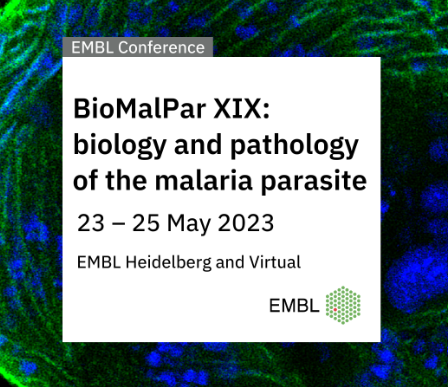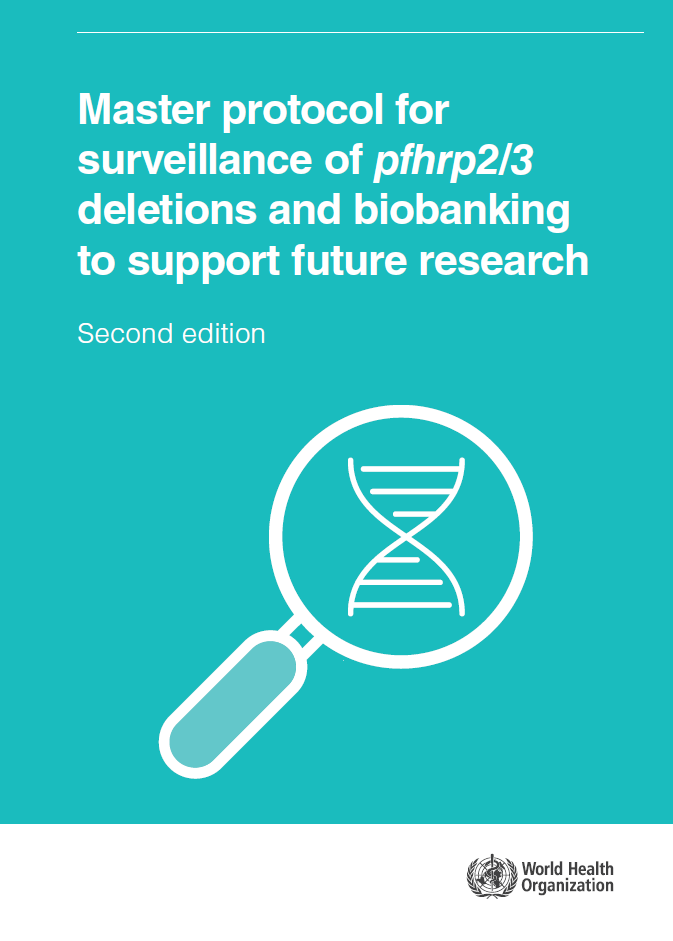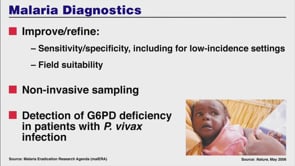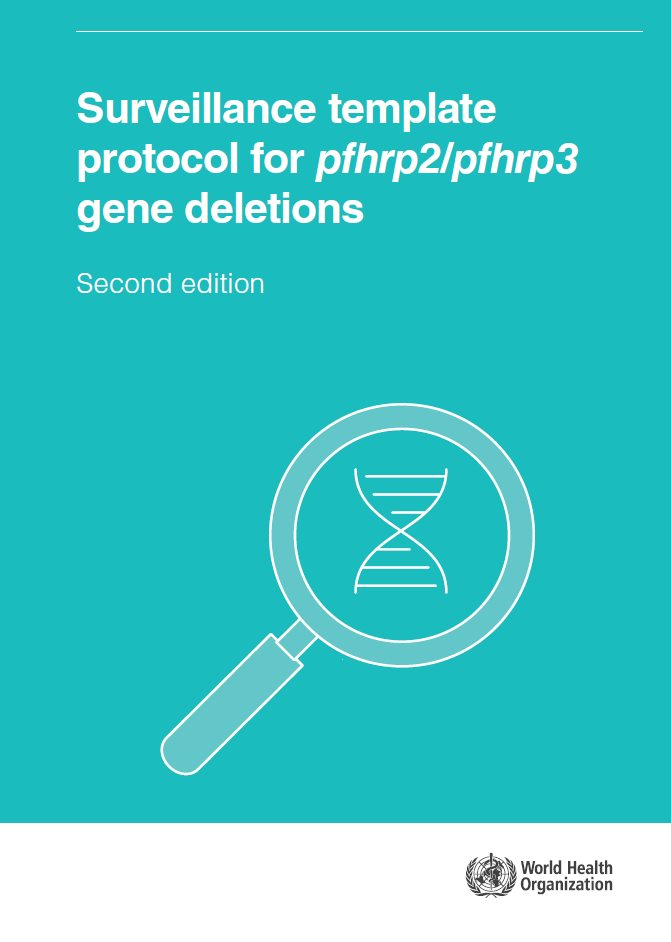BioMalPar XIX Conference “Biology and Pathology of the Malaria Parasite” – 2023: Day 1
Tuesday, 23rd May 2023
Published: 23/05/2023
This report is brought to you by the MESA Correspondents Faith Hungwe, Aaron Adjin Lartey, and Rinter Karimi. Senior editorial support has been facilitated by Yunuen Avalos Padilla and Alba Pérez Cantero.
THEMES: THEMES: Basic Science
MESA Correspondents bring you cutting-edge coverage from the BioMalPar XIX: biology and pathology of the malaria parasite
Opening Ceremony Remarks
The BioMalPar XIX conference was opened by Borko Amulic (University of Bristol, United Kingdom) one of the organizers who welcomed everyone to the EMBL Heidelberg and virtual. Before starting with the sessions, he mentioned that a total of 275 participants were present, 220 on-site and 55 in virtual attendance.
Scientific Session 1 – Evolution and Ecology
Geoffrey McFadden (University of Melbourne, Australia) spoke about the potential of gene drives as an alternative approach to successfully eliminate entire parasite populations. The current gene drive research targets the vector, whereas targeting Plasmodium parasites has not been explored. To determine the success rate of the gene drive technology, McFadden et al. developed a homing gene drive that was introduced into Plasmodium berghei parasites to disrupt the male development 4 (md4) gene necessary for male gamete production. This gene drive included a Cas9 cassette and a gRNA, and generated an exclusive female progeny. To understand the effects of the gene drive, two mice lines were infected, one carrying the md4- gene drive line, and another where the female development gene (fd1) was disrupted to produce male gametes only. Mosquitoes were allowed to feed on infected mice and the resulting oocyst and sporozoites were genotyped to evaluate whether the cassette had been inserted. Results showed that after a single crossing, all the progeny had the cassette inserted into the md4 locus causing a sex bias leading to population collapse which would bring the transmission chain to a halt. McFadden remarked on the efficiency with which the gene drive could eliminate parasites. In the end, he shared a precautionary warning regarding the ethical and safety implications that need to be thoroughly discussed prior to deploying gene drives and he mentioned that Target Malaria are following all the necessary steps to overcome these issues.
Victoria Ingham (Heidelberg University Hospital, Germany) highlights the importance of understanding metabolic changes in mosquitoes that contribute to insecticide resistance. She stated that 80% of all averted malaria cases until 2015 can be attributed to insecticide use. Malaria cases have plateaued after 2015 owing to the emergence of stronger resistance in mosquitoes (especially to pyrethroids), therefore, her study attempts at understanding this phenomenon. By investigating the effects of insecticide resistance and insecticide exposure on reactive oxygen and nitrogen species, a multi-omics approach was used on a resistant mosquito population from Burkina Faso. Ingham’s findings demonstrated that resistant populations were associated with an increase in respiratory rates and expression of oxidative phosphorylation genes compared to susceptible ones. Conversely, the opposite effect was observed after pyrethroid insecticide exposure with resistant mosquitoes having more respiration-related transcripts expressed. Finally, an increased respiratory rate indicated a direct link between metabolism and resistance. In summary, this study highlights intricate phenotypic alterations in mosquitoes that contribute to the development of insecticide resistance.
Catherine Oke (University of Edinburgh, United Kingdom) explained why the extrinsic incubation period (EIP) is an important parameter in vector control and parasite biology but also addressed gaps and assumptions found in the definition of EIP. One assumption is that a mosquito is infectious once sporozoites reach the salivary glands. By investigating the influence of mosquito age and incubation time on infectivity rates using P. chabaudi-infected mosquitoes, Oke examined how parasite burden in mosquitoes varied across days post-infectious blood meal (pIBM). The sporozoite prevalence was found to be significantly impacted being much lower on day 7, spiked on day 9 and plateaued thereafter. Meanwhile, the sporozoite burden peaked around day 12. This data reveals that day pIBM highly impacts sporozoite prevalence and burden as the likelihood of infection increases over time whilst the probability of onward transmission increases when bitten on a later day. These findings suggest that sporozoites become more infectious with time. In conclusion, Oke noted that the results make EIP measurement more complex than the definition implies.
Sarah Auburn (Menzies School of Health Research, Australia) began her talk by introducing the vivaxGEN programme which is a collaborative network with representatives from malaria-endemic countries to generate markers that can be used within endemic countries to improve malaria diagnosis. Auburn highlighted that vivaxGEN sets out to exploit the potential of genetic epidemiology to understand the transmission, resistance and opportunities for intervention at a deeper level together with rapid diagnostic tests (RDTs) and microscopic diagnostic techniques. Through capacity building and engagement, the aim is to make the program sustainable. One of the vivaxGEN projects aims to explain why Plasmodium vivax treatment is failing. Global genomic datasets were used to compare endemicity and relapses, in an Ethiopian cohort, to describe within-host identity-by-descent (IBD) patterns observed. Data revealed that approximately 60% of patient pairs (relapses and recurrences) are highly related. To identify polyclonal recurrences and differentiate between their haplotypes, a genome-wide IBD microhaplotyping marker panel was developed. This genotyping tool will enable scale and depth when deciphering clinical polyclonal types.
Gayathri Iragavarapu (International Institute of Information Technology Hyderabad, India) presented a study on the switching rates of var genes in P. falciparum, the human malarial parasite. The research aimed to explore the evolutionary optimization of these switching rates. Computational and mathematical tools were employed to investigate the hierarchy and intrinsic switching rates of var genes. Single-cell RNA sequencing data from the Malaria Cell Atlas was analyzed, revealing a preference for a specific var gene variant in the population. A clear hierarchy of var genes was observed across different stages of the blood cycle. Iragavarapu’s team developed an evolutionary simulation model that demonstrated how lower switching rates made the parasite more vulnerable to immune clearance, while higher switching rates provided an advantage for immune evasion. Experimental data supported these findings, indicating that highly expressed genes interacted more with the immune system and were easily cleared. Iragavarapu concluded by saying that var genes with higher switching rates offered an evolutionary advantage by maximizing the parasite’s growth and persistence within the host.
Scientific Session 2 – Clinical and Field Studies
Watipenge Nyasulu (Malawi-Liverpool Wellcome Clinical Research Programme, Malawi) discussed the neutrophils’ intricate involvement in cerebral malaria (CM) and their impact on disease progression. While neutrophils aid at clearing parasites, excessive neutrophil extracellular traps (NETs) formation, and pro-inflammatory environment can worsen the disease. Nyasulu aimed to identify and characterize neutrophil subsets in children with CM and assess their NET-forming ability. Blood samples were collected from CM, non-CM coma, and healthy children (control). Low-density neutrophils (LDNs) and normal-density neutrophils (NDNs) were isolated, phenotypically characterized, and their NETotic ability assessed. CM children had significantly more LDNs which were susceptible to activation, prone to form NETs, and exhibited immature expression that could contribute to the pathogenesis of CM. These findings suggest the neutrophils’ dual role in malaria and have implications for targeted therapies against severe cerebral malaria.
Nora Nghochuzie Nganyewo (Medical Research Council Unit, The Gambia at London School of Hygiene and Tropical Medicine, The Gambia) began by talking about the recent increase in low complexity polygenomic infections and sialic acid-independent invasion pathways in Plasmodium falciparum from Western Gambia. P. falciparum uses different receptor-ligand interactions to invade human red blood cells. Some clones rely on sialic acid (SA) residues on glycophorin receptors, while others use alternative receptors. Nganyewo hypothesized that intensified malaria control and reduced prevalence in the Gambia could be the reason that P. falciparum parasites have more efficient invasion pathways and ligand expression. Blood samples from 65 mild malaria patients across three years were analyzed. Neuraminidase, trypsin, and chymotrypsin enzymes determined erythrocyte invasion phenotypes. Genetic diversity was assessed through MSP2 genotyping, and the transcript levels of 6 P. falciparum genes were examined. SA-independent invasion phenotypes increased from 2015 to 2021, with 2021 isolates exhibiting high inhibition by chymotrypsin. Similarly, transcript levels varied across the years, suggesting an increase in sialic-acid independent invasion. These findings imply rising mixed infections and utilization of alternative invasion pathways by P. falciparum in The Gambia.
Aubrey Cunnington (Imperial College London, United Kingdom) focused on enhancing mechanistic inferences from blood transcriptome analysis and validating findings through comparative transcriptomics. Cunnington highlighted the potential of transcriptomics in overcoming limitations in malaria diagnostics, particularly in identifying targets and diagnosing cerebral malaria. The study conducted in The Gambia explored interactions between parasite genes and human gene expressions associated with severe malaria, specifically investigating the role of matrix metallopeptidase 8 (MMP8) in cerebral malaria pathology. Comparative transcriptomic analysis showed agreement in differentially expressed genes (DEGs) between infected humans and mice, although less consistency was observed in severe malaria cases. Emphasis was placed on selecting models with concordant genes or pathways of interest. The presentation also discussed the use of transcriptomes for diagnosis, citing Mike Levin’s work in utilizing gene patterns as diagnostic tools to overcome the binary nature of current malaria tests. Molecular taxonomy based on 161 genes demonstrated the ability to differentiate between disease classes and individual diseases. However, distinguishing incidental parasitemia from true malaria remained challenging, as asymptomatic individuals displayed no noticeable differences. The presentation concluded by highlighting the potential of lab-on-chip technology, which enables sample analysis and direct delivery of results to mobile devices.
Melissa Kapulu (the University of Oxford and KEMRI Wellcome Trust, United Kingdom) highlighted the importance of Controlled human malaria infection (CHMI) as a model for malaria research and vaccine development. Kapulu’s study examined healthy adults from different transmission areas: Ahero (a high malaria transmission area), Kilifi South (a moderate transmission area), and Kilifi North (an area with low to no exposure) to understand pre-existing immunity and identify key parasites targets. Following sporozoite injection, the data revealed variations in parasite growth control, leading to susceptible, slow-growing, clearer-phenotype and highly immune groups. Comparing CHMI’s predictive strength of schizont antibody with field studies, having adjusted for exposure and infection heterogeneity, demonstrates CHMI’s superior ability to study past exposure immunity. In addition, preliminary vaccine efficacy data on R21 and ChAd63 ME-TRAP, administered intradermally and intravenously, show higher efficacy for R21, particularly intradermally. This research sheds light on the benefits of CHMI for advancing malaria research and optimizing vaccine development.
Priscilla Ngotho‘s (University of Glasgow, United Kingdom) talk explored how gametocytes remodel host red blood cells (RBCs) during maturation, providing valuable insights into the underlying mechanisms over time. Using transgenic lines, Ngotho’s research revealed that the expression of parasite antigens coincides with flipping in the infected RBC (iRBC) membrane, exposing surface antigens and phosphatidylserine (PS), reaching peak levels during Stage II gametocytes but reverses as maturation progresses. Furthermore, a study targeting both the host and parasite scramblase to block PS exposure, suggests that scramblase blocks late PS surface loss. Notably, the study highlights that interfering with host cell modifications affects immune recognition and clearance of gametocyte-infected RBCs by immune cells. These findings contribute to developing innovative transmission-blocking approaches by enhancing the understanding of these mechanisms.
This report is brought to you by the MESA Correspondents Faith Hungwe, Aaron Lartey and Rinter Karimi Kimathi. Senior editorial support has been facilitated by Yunuen Avalos Padilla and Alba Pérez Cantero.
Published: 23/05/2023
This report is brought to you by the MESA Correspondents Faith Hungwe, Aaron Adjin Lartey, and Rinter Karimi. Senior editorial support has been facilitated by Yunuen Avalos Padilla and Alba Pérez Cantero.
THEMES: Basic Science




